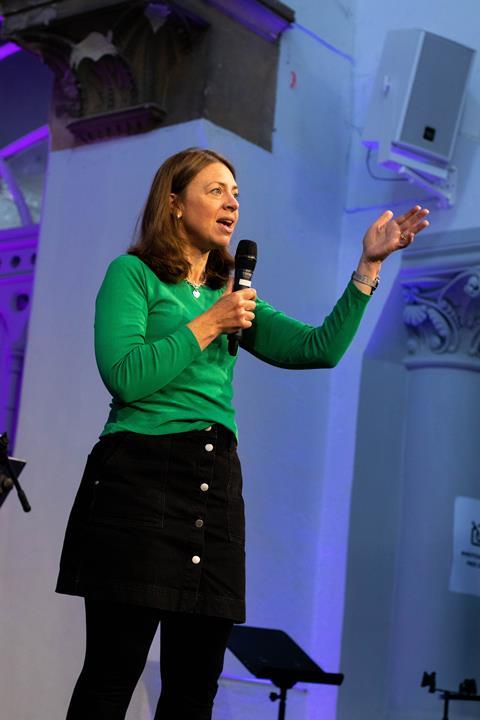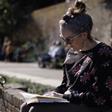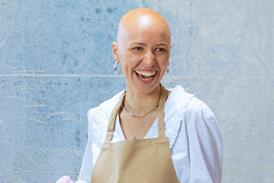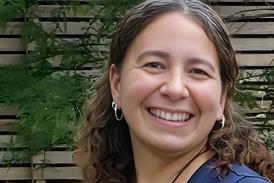Author of Image Bearers, Rachel Atkinson highlights the importance of integrating our emotional and spiritual lives

Rachel Atkinson leads St Marks Coventry alongside her husband, Phil – a vicar, and runs a diocesan-wide training and internship programme for lay leaders, St Marks Academy. Initially finding faith during her A level religious education lessons, thanks to an “incredible syllabus”, her newly ignited faith came alive at university. She felt called into ministry at the age of 22, and has spent most of her career working in theological education – teaching at Spurgeon’s and St Mellitus Colleges.
An influential friendship
In her late 20s Rachel met Ruth Miller, a Christian counsellor, whose approach to personal healing significantly influenced her, and many others. Recalling their counselling sessions, Rachel reflects on her unique approach: “like any good counsellor she was able to help you see your issues and maybe understand a little bit about where they had come from. But what was so beautiful was that she brought you back to Jesus and to the cross. So it wasn’t just about managing your issues; it was actually about finding freedom and restoration.”
If there’s a fault line in your emotional life that you’ve never dealt with, it will come back
Over the years Ruth became an important mentor, and a friend too. Then in 2011 she received a terminal diagnosis; though she’d been successfully treated for breast cancer before, the cancer returned and spread beyond cure. Sadly, she died in 2013. It was the catalyst for Rachel to capture and distil Ruth’s lifelong wisdom into a book. The whole process included friends and counselling clients, all of whom were deeply impacted by her life and work. One such friend was theologian Michael Lloyd, who co-authors the book. Image Bearers (Hodder & Stoughton) is the result, a powerful blend of theology and practice, giving voice to Ruth’s wisdom and sharing the principles so central to her legacy of Christ-centred inner healing.
Unpacking the themes
Rachel explains why it felt important to start the book with a solid theological basis: “This isn’t just ‘Christianised’ psychology but actually it’s in the very heart of God.” The book explores several biblical themes that demonstrate this: “the idea that God has made us as these incredible masterpieces [Ephesians 2] but we get damaged by the things other people do to us, as well as perhaps our own sin. But God wants to restore us – he’s the Creator, he makes the masterpiece.” Being made in God’s image [Genesis 1] is also foundational: “Creation is the beginning of the story. We were created in the image of God, and that’s who we are. We don’t start off fundamentally bad – we started off fundamentally beautiful and good, but we’ve actually lost touch with a sense of our beauty and our value, so that feels like a more theologically correct place to start.”
Image Bearers speaks to these themes, and invites us into a process of restoration: “that’s our identity, and it’s also our vocation that we bear God’s image and reflect him to the world around us”. Rachel explains further what that means: “This is about becoming the person you already are and what you were already created to be.” No matter how tarnished that image or that masterpiece has become: “actually, it can be restored”.
Image Bearers is “discipleship for anybody”. Rachel sees this as key to personal restoration: “Anybody who wants to be a mature follower of Christ needs to be able to integrate their emotional life with their spiritual life. That’s really the hope; that the Bride of Christ, the Church, will become more healed, and more whole.” This is important for church leaders too: “The thing that trips you up in any kind of ministry is not going to be that you didn’t know enough Greek or Hebrew. If there’s a fault line in your emotional life that you’ve never dealt with, it will come back – whether that is to do with a difficult childhood experience, unforgiveness or trying to get your needs met in unhealthy ways – because you haven’t allowed Jesus to come in and meet them.”
Rachel emphasises that discipleship is not solely knowledge-based, but happens through experience and living it out: “In our society, the head has been valued above the heart. And although that is changing (and in some ways it’s gone to the opposite extreme), I think we do all live with a legacy of that kind of culture. We don’t really know how to speak about our emotions or how to even name them. And we certainly don’t know how to open the door and let Jesus into that side of who we are.”
For Rachel, Ruth modelled all this to her: “I could see into her life; the way she conducted herself. And I could see her really living out what she preached. Trying to live in that place of emotional wholeness, probably the time that most came through was when she was actually dying.”
Our sense of identity is another theme that runs through the book. In facing death, Ruth found that being challenged: “She couldn’t be the grandmother she’d like to be; she couldn’t teach; she couldn’t counsel people.” A loss of identity isn’t limited to end of life; it’s often part of women’s experiences as they navigate changing seasons: “Ruth drew on and reminded herself that actually her true identity was in Christ, it was as a daughter of God. And she really had to dig deep into that. It’s when those things are tested that you see it most clearly.”
Rachel knows all too well the hurdles we can face in becoming mature believers: “We struggle to love God, or to trust him. We struggle in our relationships with other people; to relate healthily and freely to them. And we struggle to have a healthy view of ourselves, so actually we’re on a journey where we need to be able to build things into our lives that help us to do that. We need rhythms, habits and practices to move forward from that point, to take that restoration and start to relate to other people in a healthy way, so that we’re not projecting our pain onto other people. It’s about embedding these things in our lives so that we live healthily and continue to live in our identity.”

Getting practical
The book features an extensive practical toolkit to complement its theological basis: “Some of us will naturally start in practice – we’re practical people – whereas some of us will naturally start in theology. But to be able to draw those together is really powerful.” What Rachel shares in the book is wide-ranging and thorough, with practices relating to “confession, forgiveness, listening to God and starting to look at our mother wounds and father wounds”. She encourages us to “leave no stone unturned” in our pursuit of being restored.
“This isn’t just ‘Christianised’ psychology but actually it’s in the very heart of God.”
So how can we start our journey of truly becoming image bearers? “This whole question of identity is really a question of our cultural moment. Lots of different people are answering that in lots of different ways. But as we’ve tried to show, the Bible has an answer. In its very first chapter it tells us that we’re made in the image of God.” One practical thing she suggests we can each do is to: “seek God’s perspective on who we are. The main way to do that is through scripture, hearing what it has to say, finding those truths about your identity in Christ and meditating on them so that they become not only part of your belief system but part of your heart experience.”
Image Bearers is available to buy now.
Words by Alex Noel

































No comments yet